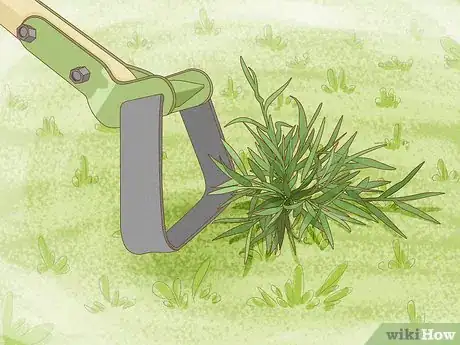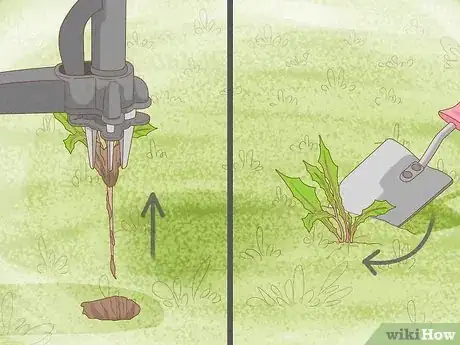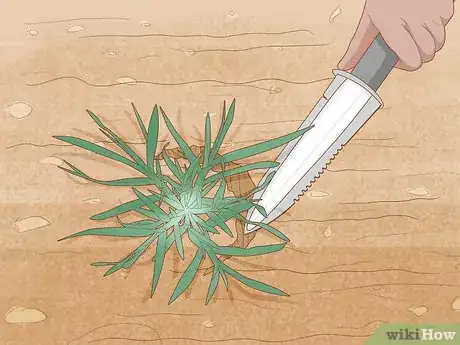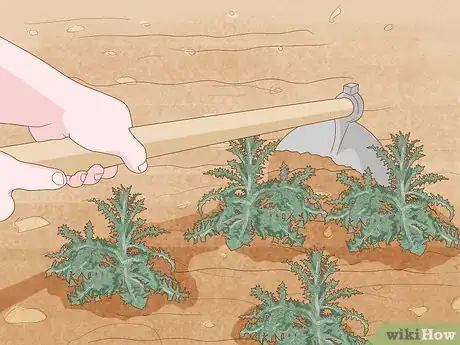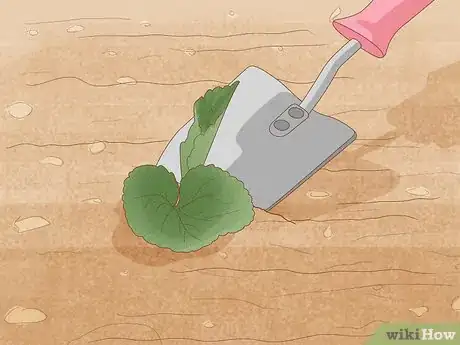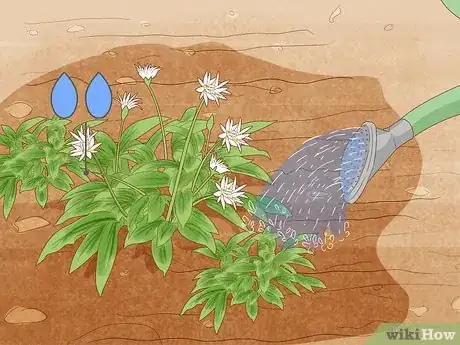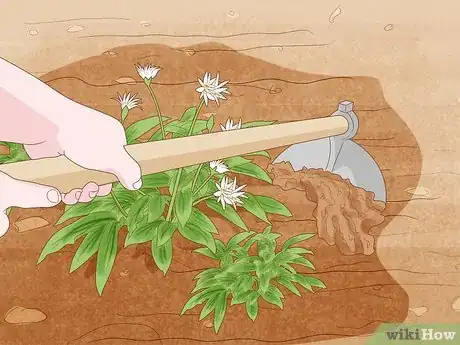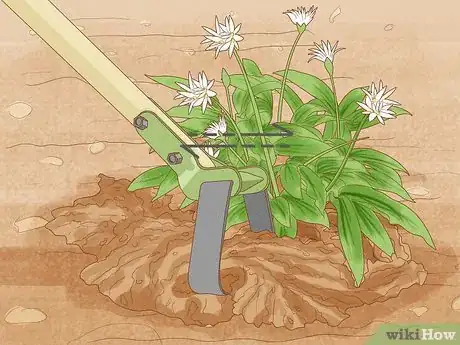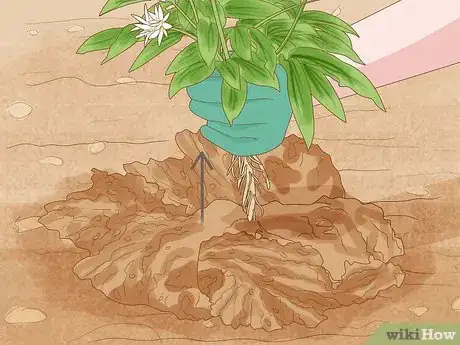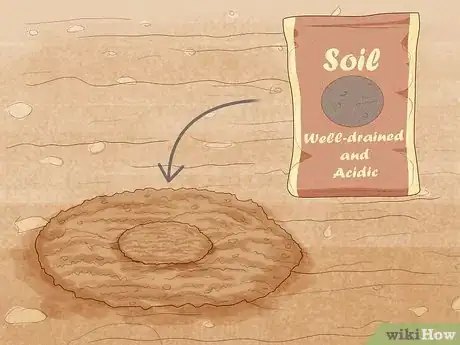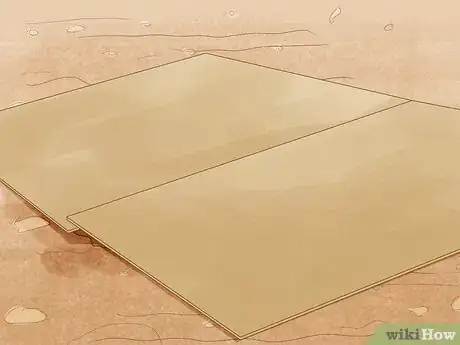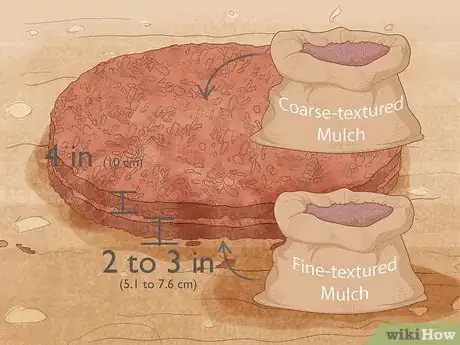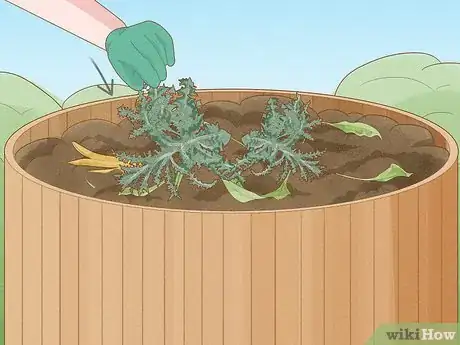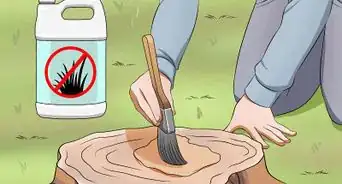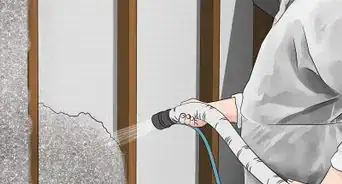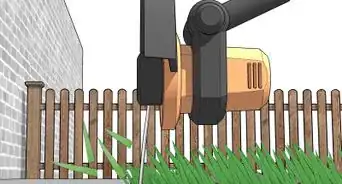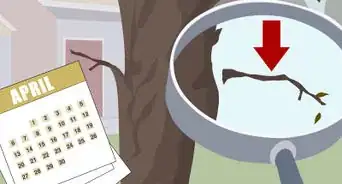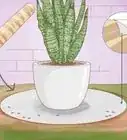This article was co-authored by Ben Barkan and by wikiHow staff writer, Hannah Madden. Ben Barkan is a Garden and Landscape Designer and the Owner and Founder of HomeHarvest LLC, an edible landscapes and construction business based in Boston, Massachusetts. Ben has over 12 years of experience working with organic gardening and specializes in designing and building beautiful landscapes with custom construction and creative plant integration. He is a Certified Permaculture Designer, is licensed Construction Supervisor in Massachusetts, and is a Licensed Home Improvement Contractor. He holds an associates degree in Sustainable Agriculture from the University of Massachusetts Amherst.
This article has been viewed 15,139 times.
No matter how large of a yard or garden you have, weeds are almost always a problem. Pulling weeds might seem like an all day chore, but it doesn’t have to be! With the right tools and techniques, you can pull weeds out of the ground quickly and stop them from sprouting again.
This article is based on an interview with our garden and landscape designer Ben Barkan, owner and founder of HomeHarvest. Check out the full interview here.
Steps
Tools
-
1Try a scuffle hoe for new weeds. Scuffle hoes, also called hula hoes, are long metal tools with a small loop at the end. They’re great for getting rid of small, leafy weeds in medium to large patches, and you can buy ones with long handles so you don’t have to bend over. To use them, place the metal loop on the ground and go in a back and forth motion to scuffle the dirt and remove the weeds.[1]
- Scuffle hoes are not great for large, root-heavy weeds, like dandelions.
-
2Use a digger or a spade for small areas. If you are hand pulling large, rooty weeds, like dandelions, you’ll need to use a dandelion digger or a spade to pull the roots out. This may require some bending and kneeling, so be sure you have knee pads as well.[2]
- If any of your weeds are prickly, grab some gardening gloves, too.
Advertisement -
3Try a Hori Hori knife for long tap roots. Large, well-established weeds tend to have long roots. To make sure you get all the roots out, purchase a Hori Hori knife, or a long, pointed spade. It will help you dig out the roots quickly and save you some time.[3]
- Hori Hori knives also have one serrated edge to cut things with.
-
4Use a hoe for large areas. If you have a lot of weeds you need to take care of quickly, a hoe is your best bet. This long-handled tool with a sharp metal blade will stir up soil quickly so you can rake the weeds out of it. Hoes work best on soft, loose soil with small, leafy weeds.[4]
- If you have an extra-large area (like a farm), consider using a mechanical tiller.
Technique
-
1Pull weeds when they’re small. Established weeds are much harder to pull than small, newly grown ones. As soon as you notice weeds starting to come in, grab your tools and get to pulling.[5]
- Most weeds grow very quickly, and some can even grow noticeably larger in just a few days.
-
2Wait until the soil is moist. Wet soil is much easier to work with than dry soil. If you have the time, wait until after it rains to start pulling your weeds. If you’re working in a small area and it hasn’t rained in a while, you can give the area some water with your hose.[6]
- It’s totally possible to pull weeds out of dry soil, it just might be a little harder to do.
-
3Scrape your hoe or scuffle hoe along the dirt. If you’re pulling weeds from a large area, grab your scuffle hoe or standard hoe and place the edge onto the soil. Move your arms back and forth to break up the top layer of dirt and remove the weeds. When you’re done, use a rake to collect all of the leafy weeds and put them into the compost.[7]
- Try to work in a straight line so you can keep track of where you’ve already weeded.
-
4Push your spade or digger tool into the soil next to the weed. For large, rooty weeds, you’ll need to use a Hori Hori, dandelion digger, or spade. Push the tool into the dirt next to the weed and angle it inward toward the roots. Gently wiggle the tool to loosen the soil before you start pulling.[8]
- If you are using a scuffle hoe or a regular hoe, you don’t need to insert your tool into the soil.
-
5Pull the weed straight up. Grab the weed by the base and gently tug upwards. Don’t shake the weed as you pull, since that could spread seeds. If you meet any resistance, stop and dig the root loose again. Keep pulling gently until you get the entire weed, roots and all.[9]
- If you leave any of the roots in the ground, the weeds will grow back very quickly.
- If the roots snap off, use a spade to dig into the ground and find them.
Weed Prevention
-
1Replace the soil once you pull out a weed. After you pull out a weed, tamp the dirt back down in the hole. Disturbed dirt makes a great habitat for new weeds, so it’s important to do this after you pull them out.[10]
- You could even plant new, native plants or grass over the now vacant area.
-
2Put cardboard over the soil to prevent new weeds. A large patch of dirt is the perfect area for weeds to grow. If you want to keep them out of your soil, place a few sheets of cardboard over the soil to cover the dirt entirely. As the cardboard gets wet, it will start to break down slowly and dissolve into the soil. However, it will also create a protective barrier that stops new plants from growing in the area.[11]
- This is a great technique to use if you plan on starting a garden or growing crops in a big area.
-
3Mulch the area to prevent new weeds. If cardboard isn’t your thing, add a 4 in (10 cm) layer of coarse-textured mulch to the area, like bark chips. Then, add 2 to 3 in (5.1 to 7.6 cm) of fine-textured mulch on top, like shredded leaves. The mulch will block the sunlight and keep weeds from growing in your lawn or garden.[12]
- Be sure to keep the mulch a few inches away from any plant or tree roots, as mulch can cause rot and disease.
-
4Add weeds to your compost pile. To kill weeds, don’t just throw them in with your yard debris. Instead, add them to a compost pile and make sure the center reaches at least 55 °C (131 °F) for at least 3 days. The high heat will kill the weed seeds so you can safely use your compost in your garden.[13]
- If you don’t have a compost pile and you’re dealing with invasive weeds, you can either burn them, bury them, or take them to a waste disposal facility in your area.
References
- ↑ https://today.oregonstate.edu/news/pull-weeds-they-pop-or-desired-plants-will-suffer
- ↑ https://www.thisoldhouse.com/landscaping/21017808/how-to-get-rid-of-weeds
- ↑ https://today.oregonstate.edu/news/pull-weeds-they-pop-or-desired-plants-will-suffer
- ↑ Ben Barkan. Professional Gardener. Expert Interview. 14 April 2020.
- ↑ https://today.oregonstate.edu/news/pull-weeds-they-pop-or-desired-plants-will-suffer
- ↑ https://today.oregonstate.edu/news/pull-weeds-they-pop-or-desired-plants-will-suffer
- ↑ https://today.oregonstate.edu/news/pull-weeds-they-pop-or-desired-plants-will-suffer
- ↑ https://www.thisoldhouse.com/landscaping/21017808/how-to-get-rid-of-weeds
- ↑ https://www.invasive.org/gist/products/handbook/03.manualmechanical.pdf
- ↑ https://www.invasive.org/gist/products/handbook/03.manualmechanical.pdf
- ↑ Ben Barkan. Professional Gardener. Expert Interview. 14 April 2020.
- ↑ https://www.thisoldhouse.com/yards/21015343/say-good-bye-to-weeds
- ↑ https://www.qld.gov.au/environment/plants-animals/plants/plants-weeds/gardeners
- ↑ Ben Barkan. Professional Gardener. Expert Interview. 14 April 2020.
